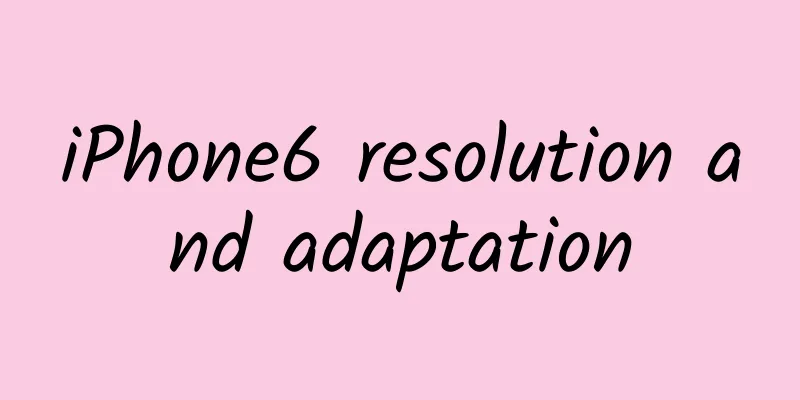iPhone6 resolution and adaptation

|
Resolution and pixels Verified by the new Xcode6 simulator (resolution is pt, pixels are real pixels):
PaintCode made several pictures to explain it very clearly. Automatic adaptation If not processed, it will be automatically stretched in equal proportions. If you print the screen frame in the old project, it will still be Because of the stretching, there will be some blur. The navigation bar is obviously larger than 64, but it is still much better than the 3.5-inch to 4-inch black border. In addition to changing the startup image, I have to say that you can use a However, this xib cannot be associated with any code (cannot customize the View Class, cannot IBOutlet, cannot add Object), which can be understood as this xib is a screenshot. The advantage of this solution is that About manual adaptation As long as you manually specify the startup image or the xib, the screen resolution will become the expected size. All the codes in the old code that hard-code the frame value will be out of luck. If you adapt manually, you have to adapt everything. It is recommended not to make any changes before finding a feasible solution . The automatic adaptation solution does not affect the usage. Facing iPhones with 4 resolutions, it is recommended to use About Xcode 6
|
<<: Android image smooth scrolling component Glide
>>: Microsoft complains about Android phones: Stuck in the air
Recommend
In addition to operational knowledge, where can APP operations get inspiration?
On June 21, the article titled "Just now, th...
Comment: The 5G era will change the competition landscape of the mobile phone market, and Apple may suffer
Market research company Canalys recently released...
Xu Yuan's observation: The logic of China's monetary policy
Xu Yuan's Observation: The Logic of China'...
How to operate a Douyin corporate account without experience and manpower?
With the rise of short video platforms, more and ...
APP fission guide: How to design a productized new user acquisition mechanism to achieve user growth?
When it comes to product-based new user acquisiti...
Hard constraints on software development
When checking out at a supermarket, the cashier w...
[Case] Start from the scenario and make your fear marketing more effective!
In life, we always make various purchasing decisi...
Cognitive iteration allows you to transition from micro-operation to large-scale operation!
At the beginning of this year, Luo Pang’s speech ...
Inventory of customer acquisition channels for Internet advertising!
Whether it is a service or a physical product, on...
The three key points of enterprise private domain traffic operation are "attract", "retain" and "collect".
As public domain traffic becomes increasingly exp...
Establishing four strategic systems for user operations
What is the user operation system like? I believe...
6 major information flow advertising platforms, which channel is the most powerful
iResearch predicts that in the next two years, in...
"Dive" into deep water at night to explore the splendor of ancient marine life
Produced by: Science Popularization China Produce...
Tesla recalls some Model X vehicles in China due to safety risks
Not long ago, Tesla issued a voluntary recall not...
How to repay Alipay Huabei installment in advance? Can it still be used after paying off in installments?
Ant Huabei is a credit consumption tool in the In...









